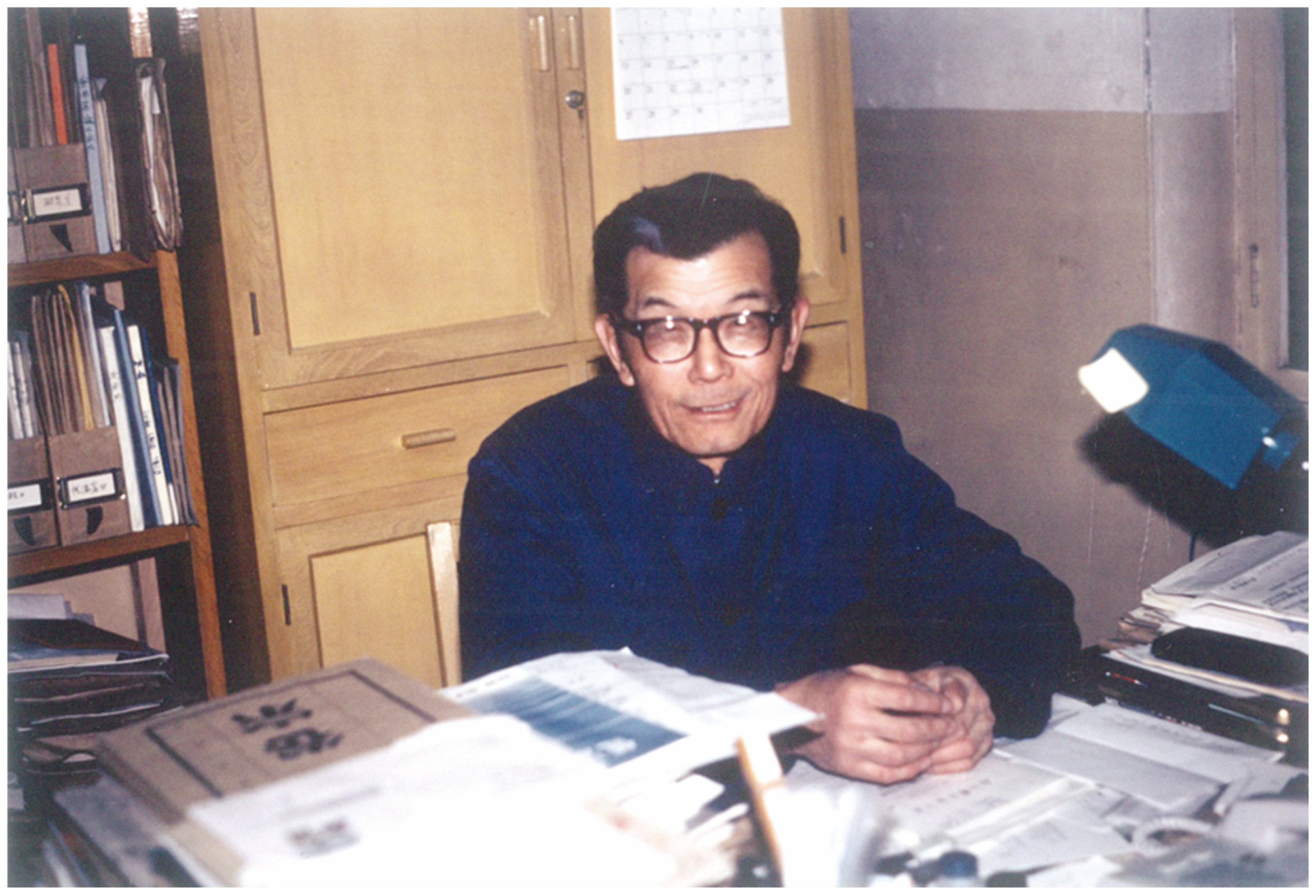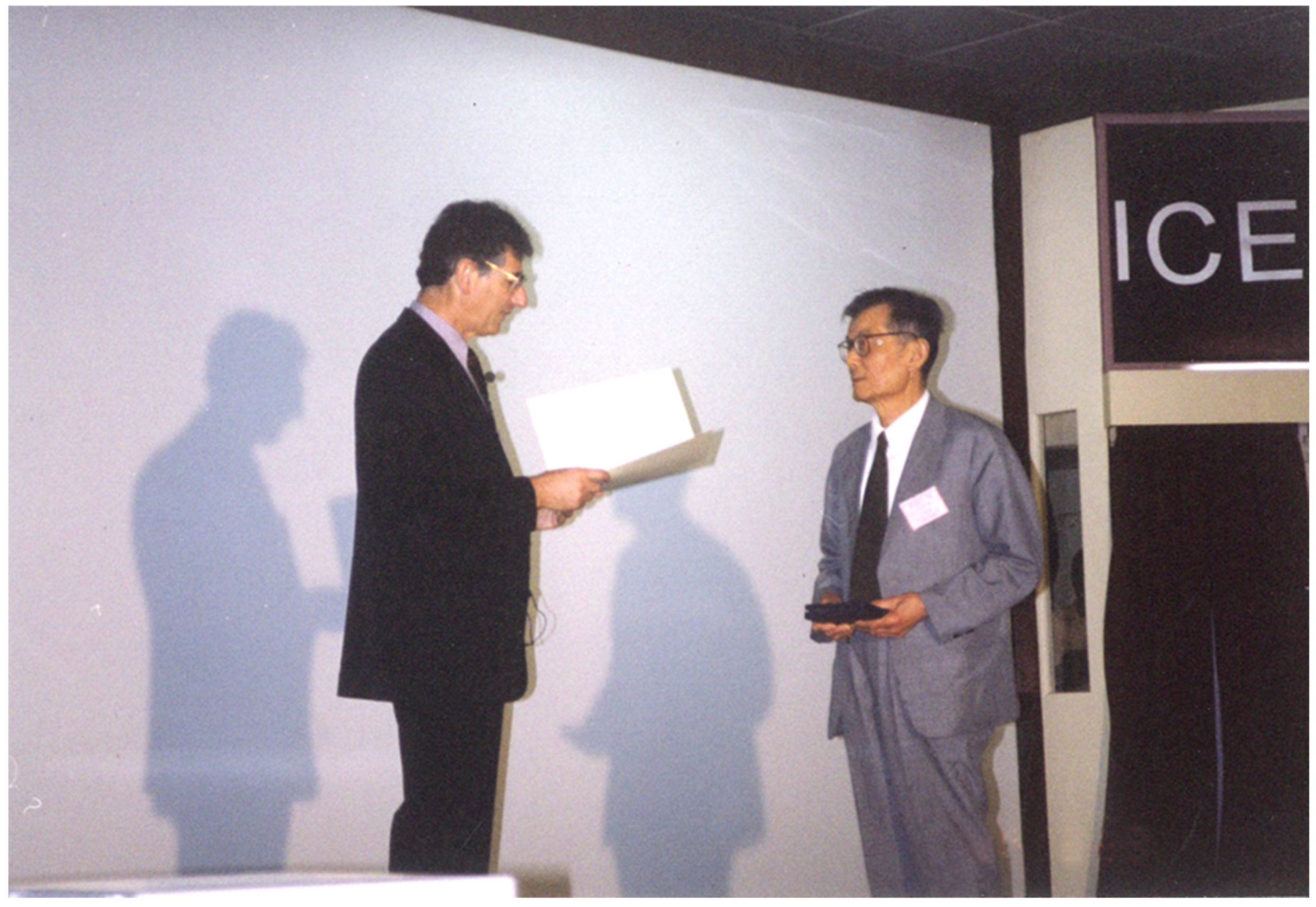2. Early Life and Academic Contributions
Prof. Dr. Hong was born on 10 October 1920, in Beijing (then Beiping), with ancestral roots in Minhou, Fujian Province. Graduating from the Department of Electrical Engineering at Tsinghua University (National Southwestern Associated University) in 1940, he served as a teaching assistant in the same department during 1941. In 1945, he commenced doctoral studies in the United States, earning his Doctor of Science (Sc.D.) from the Massachusetts Institute of Technology (MIT) in 1948. Subsequently, he joined the Department of Physics at Purdue University, where he conducted research on low-temperature electrical conductivity in semiconductors. In 1950, his experiments on cryogenic-temperature transport phenomena in germanium single crystals revealed anomalous conductivity and the anomalous Hall effect. This groundbreaking work led him to propose the novel concept of conduction via impurity energy levels within the semiconductor band gap, which was later internationally recognized as the “Hong Chaosheng Effect”. This discovery marked the beginning of theoretical and experimental research on electron transport in disordered systems, ultimately triggering international explorations into electron transport mechanisms in disordered systems by Nobel laureates including Nevill Mott and Philip W. Anderson. In June 1950, he relocated to the Kamerlingh Onnes Laboratory at Leiden University, the Netherlands, to pursue experimental studies on superfluid helium. There, he made the seminal observation of the existence of a critical velocity in superfluid helium at cryogenic temperatures.
In 1951, Prof. Dr. Hong returned to China and served as a professor in the Department of Physics at Tsinghua University and an associate professor at the Institute of Applied Physics (later renamed the IOP, CAS). By 1954, he was appointed professor at the IOP, CAS. He founded and directed the Cryogenic Physics Laboratory at the IOP. Leading a team of young scientists in building China’s cryogenic capabilities from the ground up, he achieved the nation’s first successful liquefaction of hydrogen in 1956. This breakthrough was followed in 1959 by another landmark accomplishment: producing liquid helium using China’s first self-engineered hydrogen-pre-cooled helium liquefier. The mastery and nationwide implementation of hydrogen and helium liquefaction technologies constituted fundamental contributions to China’s scientific advancement. In 1958, Prof. Dr. Hong established China’s first superconductivity research group within the Cryogenic Laboratory in the IOP, CAS. He initiated the pioneering proposal to develop superconductors with transition temperatures exceeding 80K in China, while spearheading research on superconducting thin films and electronic computer components. These endeavors marked the dawn of superconductivity research in China.
Beginning in 1953, Hong collaborated with Kun Huang, Shouwu Wang, and Dingyuan Tang in advancing semiconductor research, education, and public outreach in China. Together, they established specialized courses in solid-state physics and semiconductor physics at Peking University and the IOP, CAS. During the pivotal Joint Semiconductor Specialization Program (1956–1958), a national initiative uniting five leading universities, Prof. Dr. Hong personally guided experimental work on Hall effect measurements and conductivity studies in semiconductors, training China’s first generation of semiconductor specialists.
In collaborative national semiconductor research initiatives, Hong partnered with Lanying Lin to establish a variable-temperature Hall coefficient and conductivity measurement system operating from liquid hydrogen to room temperature (15 K–300 K), through which they characterized temperature-dependent mobility in germanium and observed the low-temperature anomalous conduction effect (the Hong Chaosheng Effect) in germanium and indium antimonide (InSb) samples for the first time in China. He further led or guided critical advancements in germanium processing, including zone refining, doping studies of single crystals, and material characterization; under his mentorship, young scientists achieved China’s first zone-refined 9N-purity germanium (99.9999999%), grown into horizontal single crystals that met the stringent requirements for germanium transistor fabrication.
In the early 1960s, Hong established China’s first university-level cryogenic physics program at the University of Science and Technology of China (USTC), concurrently serving as director of the Cryogenic Physics Research Laboratory while teaching core courses including Cryogenic Engineering and Experimental Techniques in Low-Temperature Physics, thus cultivating generations of high-caliber scientists who would pioneer advancements in China’s cryogenic physics, low-temperature technology, and superconductivity research.
In 1970, Hong led the development of compact cryocoolers, pioneering a novel configuration integrating a two-stage Gifford-McMahon (G-M) cryocooler with a throttling cycle. Through iterative design refinements and rigorous system integration testing with satellite parametric amplifiers, his team successfully independently developed G-M cryocoolers meeting stringent operational specifications. By 1975, these cryocoolers were deployed in China’s first domestically developed ground receiving stations for cryogenically cooled parametric amplification equipment. Concurrently during the 1970s, Prof. Dr. Hong led cryogenic research teams to develop helium refrigeration systems for the KM3 and KM4 large-scale space environment simulators, creating critical space simulation test conditions for satellite launch validation. This foundational work contributed significantly to China’s aerospace advancement. The landmark achievement of the “Development of the KM4 Large-Scale Space Environment Simulator” was honored with the 1985 State Science and Technology Progress Award (First Class).
In 1980, Prof. Dr. Hong led the establishment of the Technical Center for Cryogenics, CAS, and served as its founding director. Under his leadership, the Center spearheaded CAS’s Sixth Five-Year Plan Key Research Program on cryogenic superconductivity while standardizing fundamental liquid-helium-temperature technologies; completed the cryogenic system for the China-France Cooperative “Neutron Scattering” Project’s cold neutron source; and established a high-precision cryogenic metrology laboratory, achieving international calibration standards.
In 1999, pursuant to the institutional restructuring of the CAS, the Technical Center for Cryogenics (CAS) and the Institute of Photographic Chemistry (CAS) jointly established the TIPC (CAS); Prof. Dr. Hong subsequently served as emeritus director of its Science and Technology Committee until his later years, providing strategic guidance for the institute’s development trajectory.
Hong also served as vice president of the Chinese Physical Society, vice president of the Chinese Association of Refrigeration, and vice chair of the International Cryogenic Engineering Committee. In 1978, he was commended by the National Science and Technology Conference as a national scientific and technological worker. In 1989, he received the Hu Gangfu Physical Science Award from the Chinese Physical Society. In 2000, he was awarded the Mendelssohn Prize by the International Committee for Low Temperature Engineering (
Figure 2). In 2011, he received the Samuel Collins Award at the American Low Temperature Engineering and Low Temperature Materials Conference.
Throughout his nearly eight-decade career spanning scientific research and education, Prof. Dr. Hong left a lasting scientific legacy. His monumental achievements and enduring contributions secure him an immutable place in the annals of China’s scientific advancement—a legacy perpetually deserving of our reflection, honor, and emulation (
Figure 3).






